Melbourne Museum’s Monster!
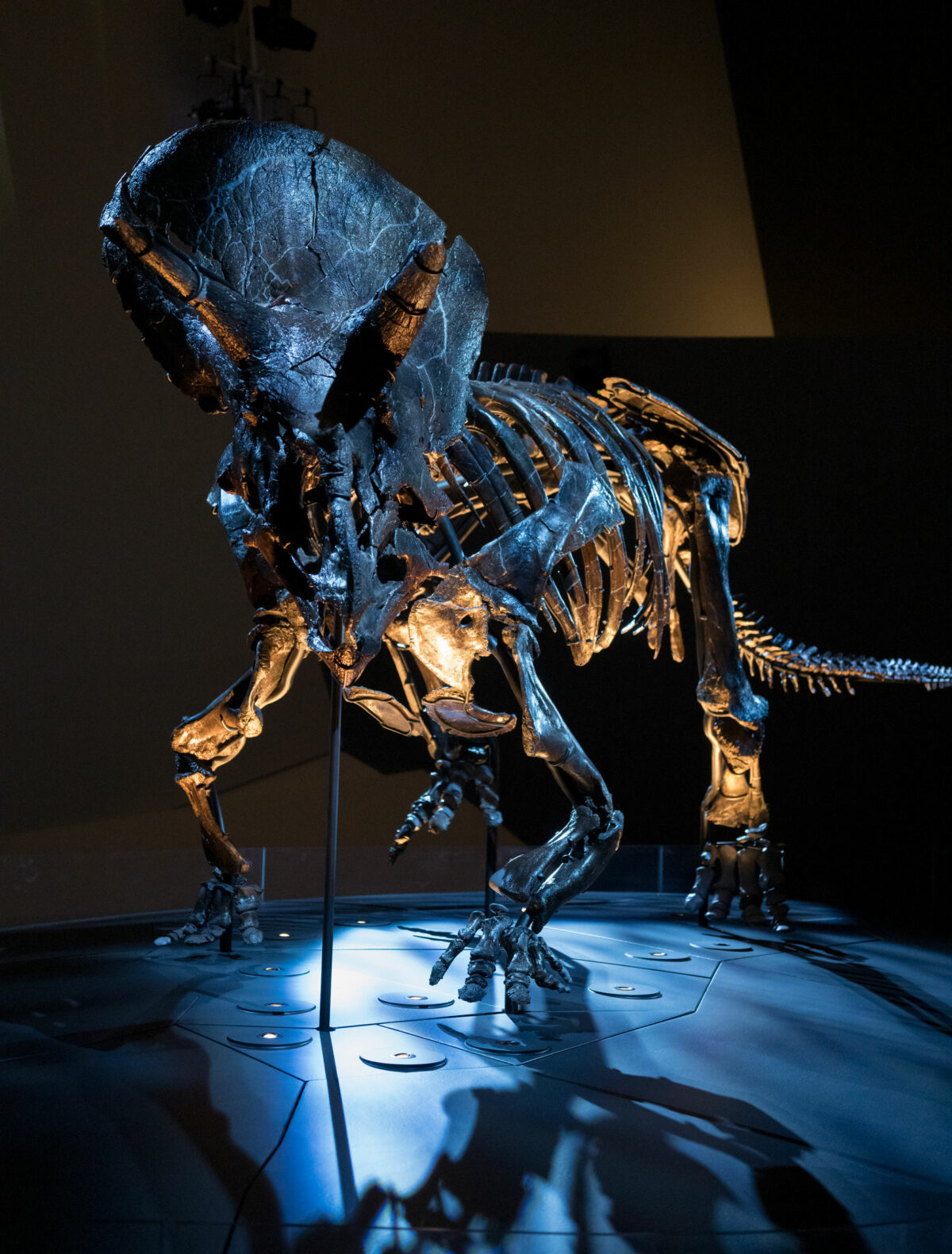
Last year Melbourne Museum announced a new acquisition to members (I’ve been a member for some years). They had managed to acquire the most complete triceratops fossil skeleton ever uncovered, and were preparing a special exhibit. It took longer to get ready than they expected, but the results are worth the wait. It went on public exhibition today, and I managed to get in (members got preferential access to tickets). Love how they have put it on display. And it is on display – 85% of the skeleton on display is the real fossilised bone and tendon – we are not looking at a replica or model or cast – this is the real thing. To get any closer to a real triceratops, you’ll need to stow away on a Tardis.
I made a mistake – I started with the 70-200mm, but even at 70mm it’s difficult to get all of Horridus (that is the name they have bestowed upon the exhibit – it is the species name of this triceratops) into the frame. Fortunately I had tucked the little 50mm Voigtländer APO Lanthar lens into my bag, and that was what I used for most of these images. As you can see from the images, the skeleton is lit with a slowly changing mix of lights (I asked: it’s about a 9-10 minute cycle), and the rest of the room is fairly dark. Even with the lens wide open at f/2, that took my ISO into the upper ranges – some of these images are shot at ISO 10000, even 12800, so I have used a little bit of noise reduction (it mostly affected the background, rather than the skeleton). Most of the images are not cropped.
You can take photographs from ground level, from a balcony part way up the stairs, and from the next floor, so there are plenty of opportunities for different views. I have chosen to show some images from the same vantage point to show how the lighting changes.
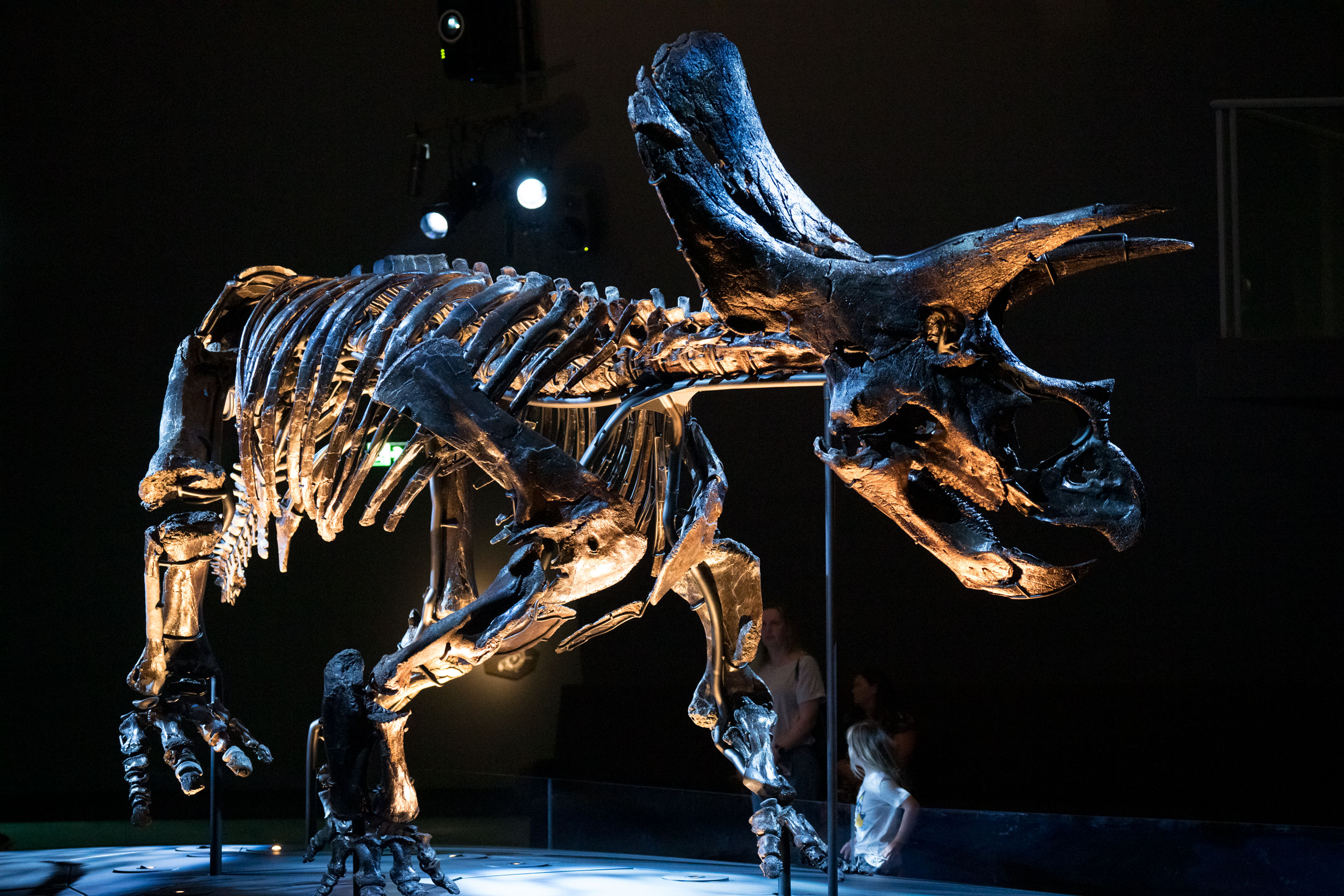
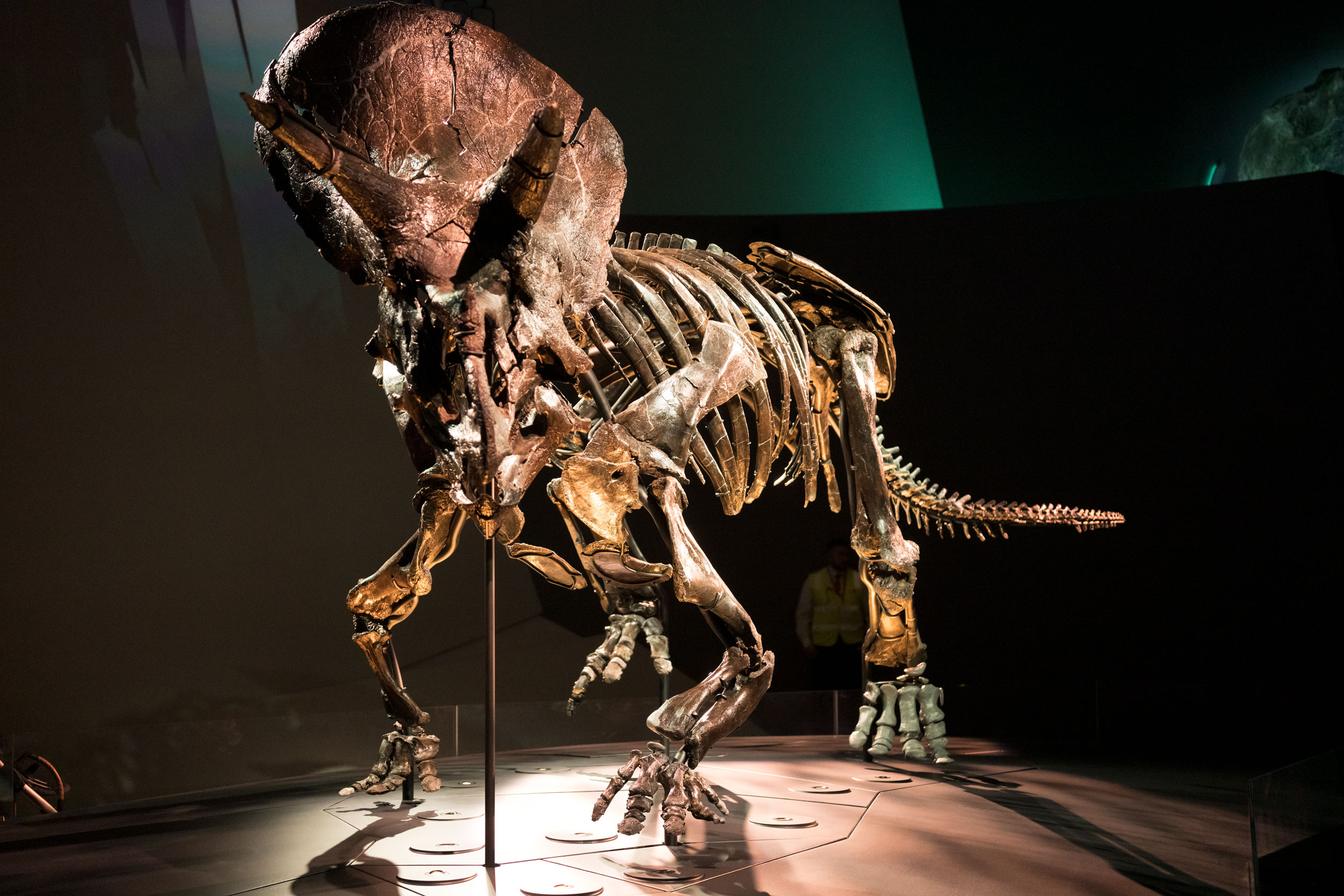
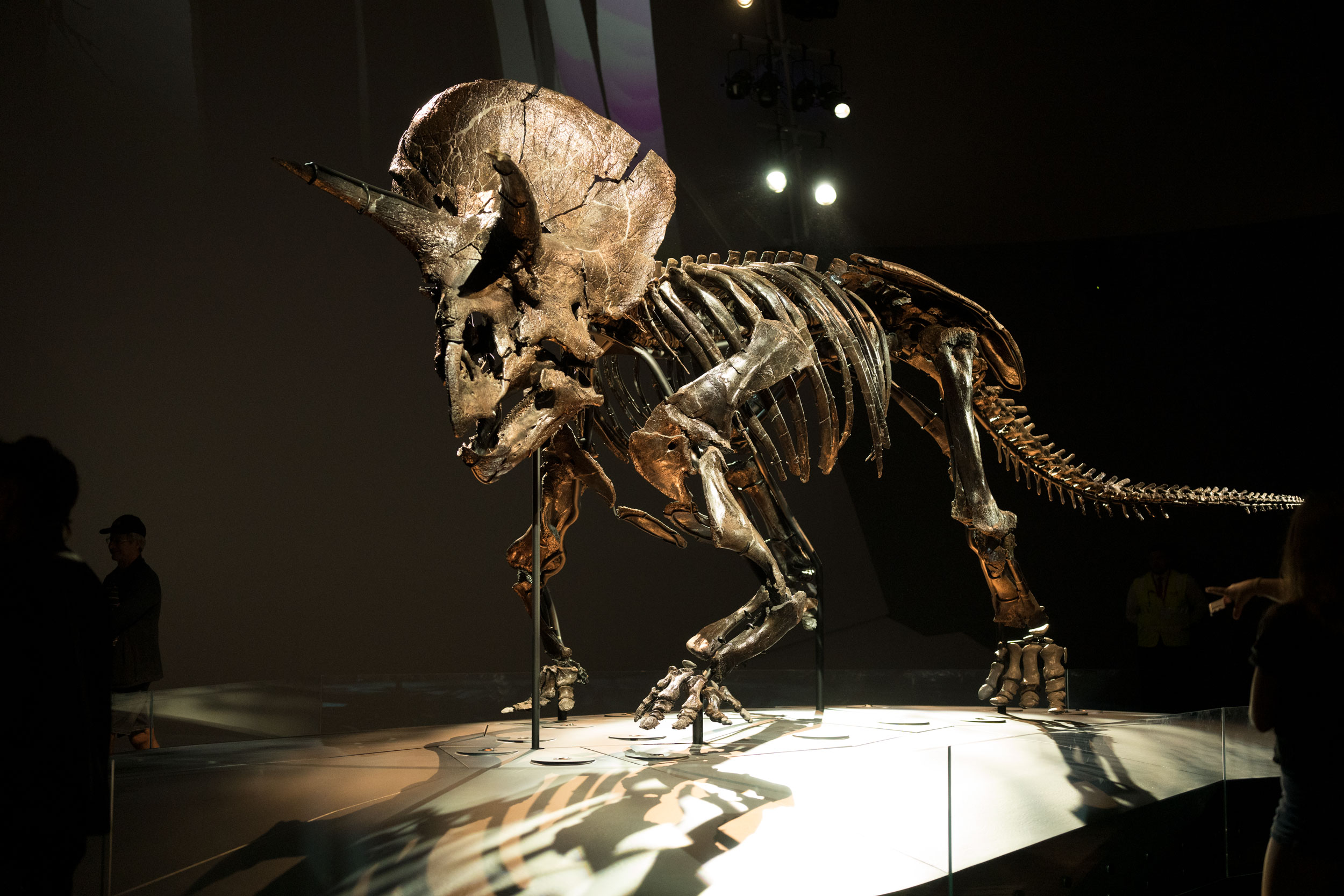
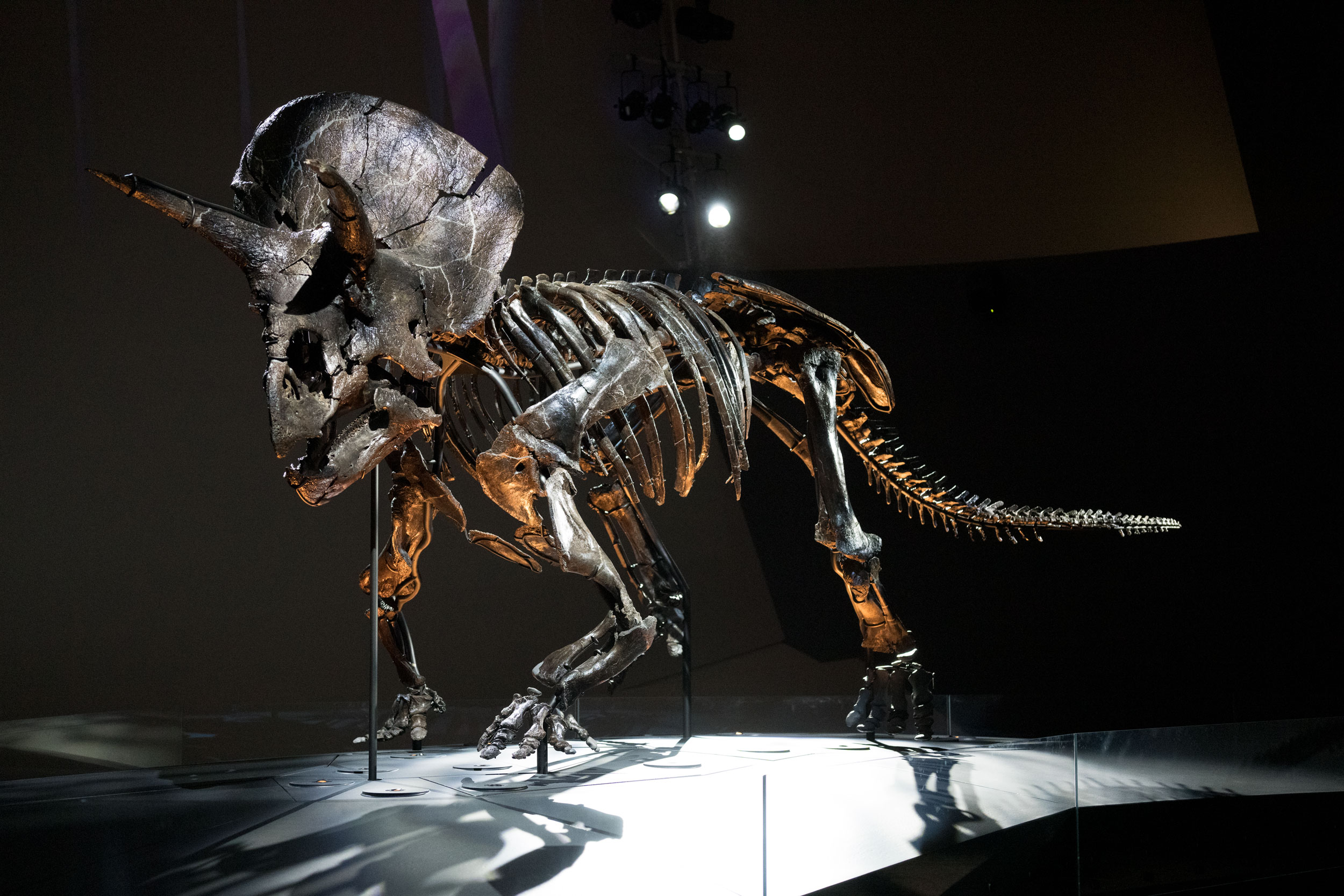
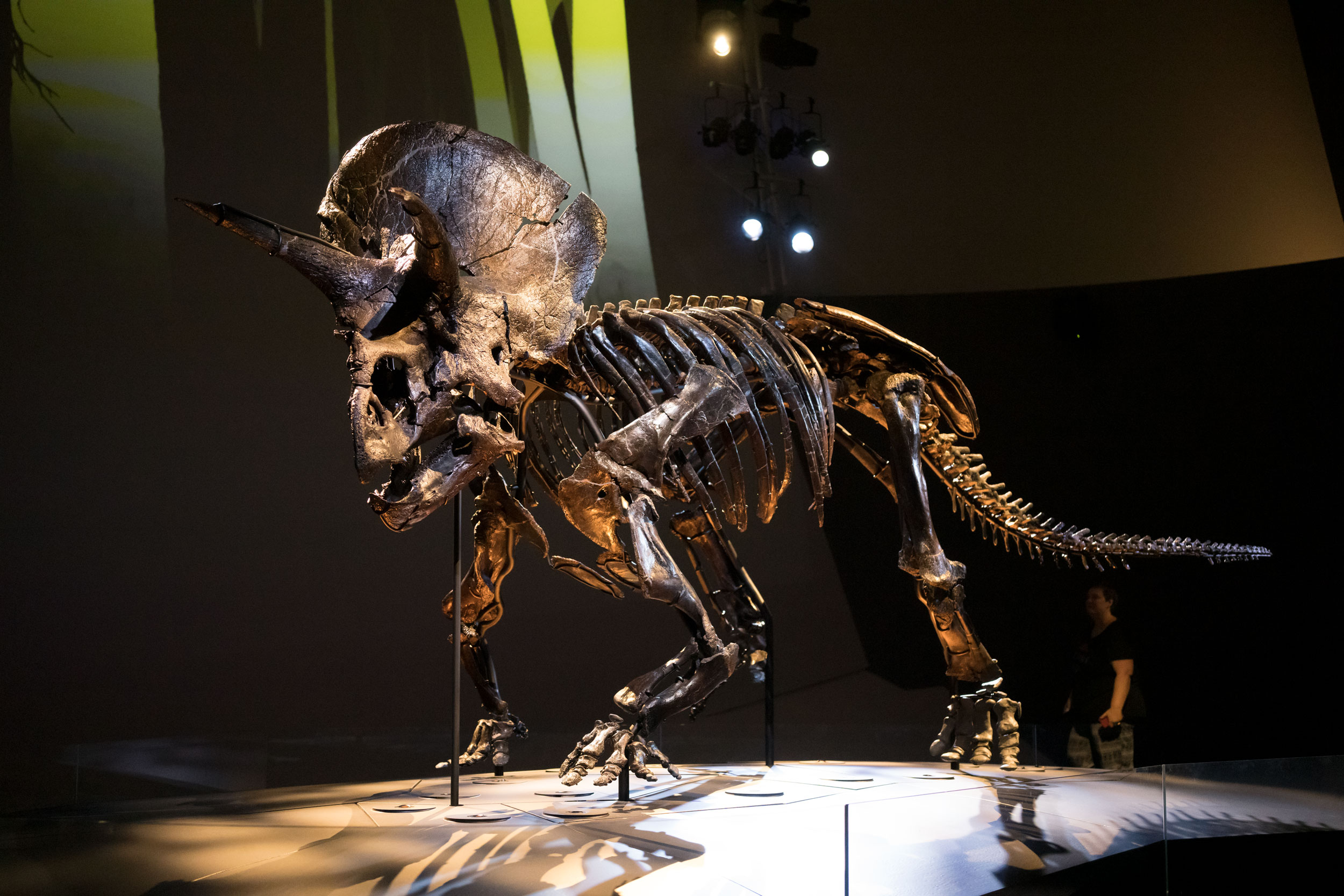
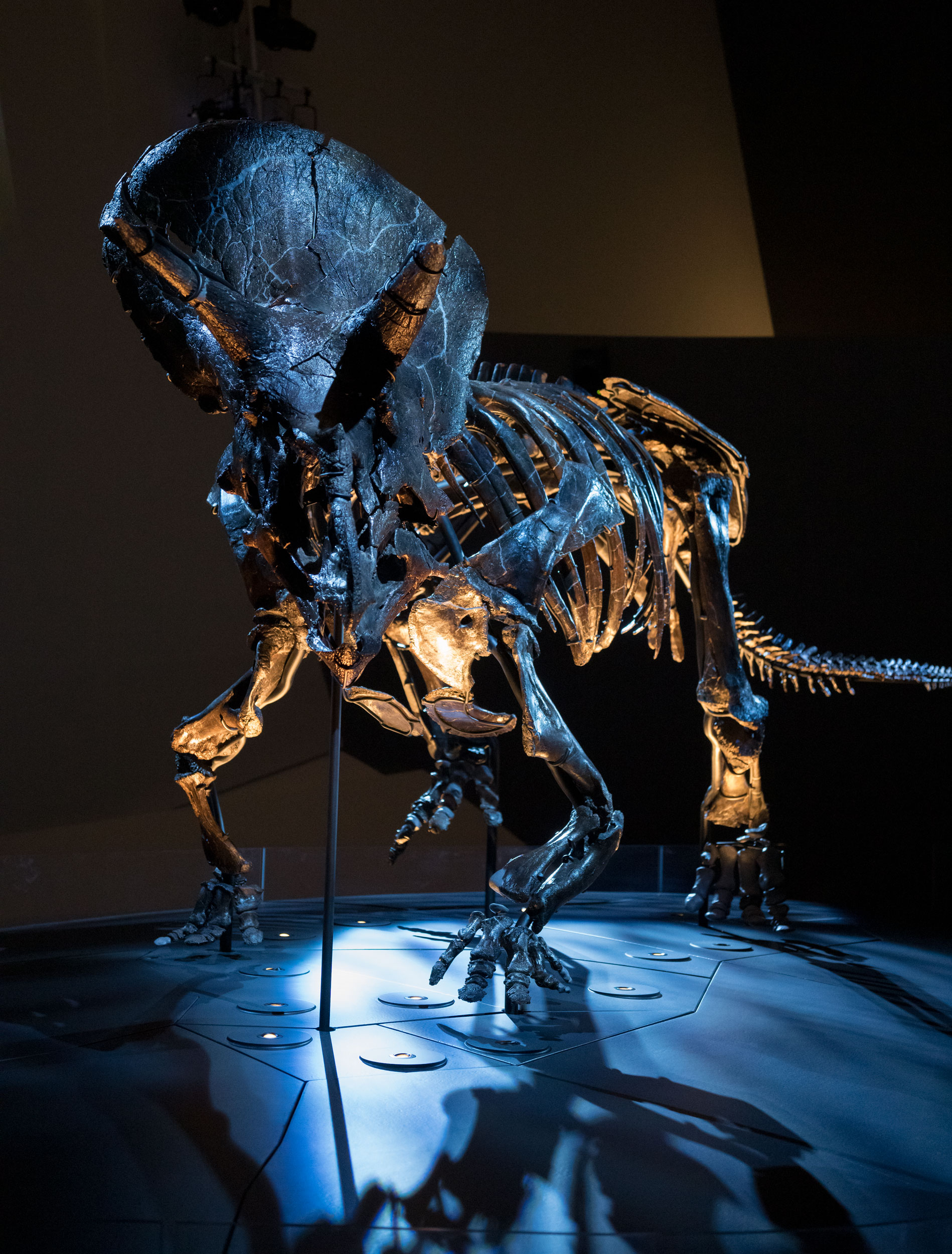
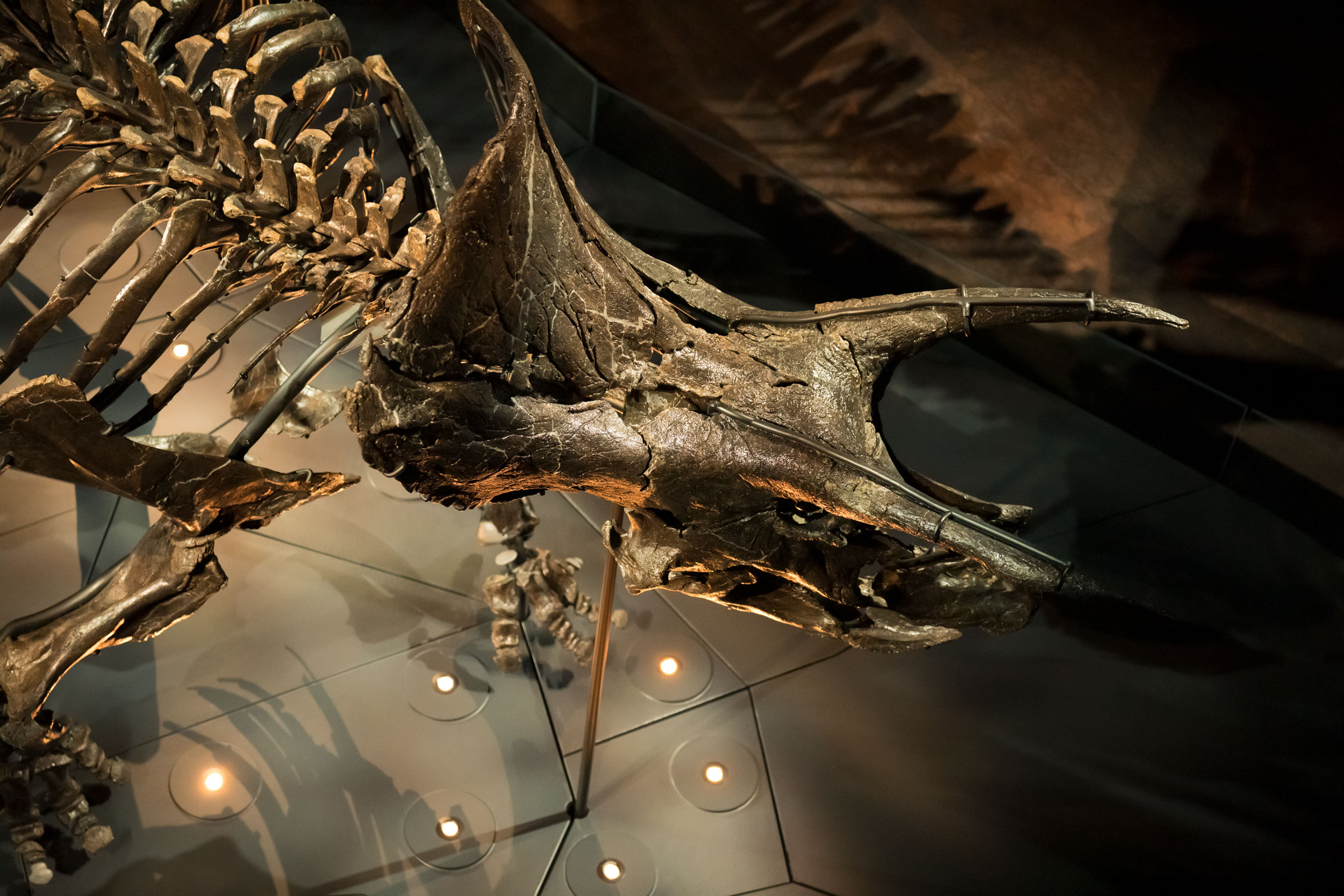
The last shot was taken from the floor above, looking down on Horridus. Fortunately, triceratops can’t jump!